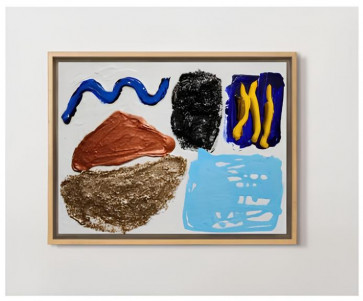Coral bleaching and why we are the ones to blame
We all know that coral is beautiful
Change text size
Gift Premium Articles
to Anyone

W
e all know that coral is beautiful. The incredible colors of its various species come from microscopic, algae. These organisms are corals’ main source of food. The thing is, when coral is stressed, those algae leave. This makes the corals look pale, and in some occasions, completely white. This is called bleaching. When bleached, coral becomes vulnerable, making it prone to diseases, and it can even lead to death.
The first mass bleaching event was recorded in 1980. Afterwards, bleaching took place in shorter intervals with an increased intensity in 1998, 2010, 2015 and more recently in 2016. Another example of a massive coral bleaching can be seen in Caribia, which has lost nearly 80 percent of its coral since 1920.
Closer to home, if you go to Nusa Dua in Bali, where last month’s “Ocean Summit” was held, you can see the bleaching there too. Across the globe, we have lost 40-50 percent of coral in the last 50 years. Therefore in the next few decades, the situation can only get worse. While this is environmentally important, it is also an economically-critical issue. The UN estimates that coral reefs globally generate over US$172 billion per year. The Summit agreed to the “50 reefs initiative”, a joint effort to save the world’s endangered coral reefs.
Coral can get stressed quite easily, particularly if it is subject to changes such as temperature rise or increased acidity in the ocean — which is closely related to global warming. These days, the ocean is already 30 percent more acidic than it was before, largely because the amount of CO2 in the atmosphere is increasing.
Once released into the atmosphere, most of this toxic gas is then absorbed by the ocean and changes the composition of the ocean. This process is known as ocean acidification. With more acid in the ocean, it is more difficult for all animals with shells to create their shells.
Acidification also slows down the rate at which different types of coral can create their skeletons, as their rate of calcification becomes lower. In extreme cases, the clam industry will be heavily affected, severely affecting fisheries such as mussel, oyster and clam farming.
What’s worse, ocean acidification is not the only threat. Global warming, the other child of climate change, also poses a serious problem as most heat on the planet is stored in the ocean. Between 1861 and 2000, the average ocean temperature increased by 0.4 – 0.8 Celsius.
By the end of this century, the ocean temperature is predicted to increase by 1–2 Celsius. While this may not seem like the end of the world, most corals now already live close to the top temperature that they can tolerate. As a result, even a slight temperature rise could quite possibly cause serious damage. Since 1979, there have been dozens of reports of coral bleaching related to the rise of sea surface temperatures, whereas from 1876 to 1979 only three events were recorded.
We, sadly, are the ones to blame for this temperature rise. The recently released report from the Intergovernmental Panel on Climate Change states with 90 percent certainty that most of the observed warming of the planet over the last half century has been caused by human actions as a result of the accumulation of greenhouse gasses (including CO2).
The good news is that it is not too late to do something about it. First, we can reduce the pressure on coral by conducting less activity that risks coral reefs. This includes over fishing, littering, and anchoring. Poisoning and coral reef bombing to fish must be strictly prohibited.
Second, we need to improve our land management in catchment areas. At the same time, we should increase our control over pollution that can damage coral reefs. This includes domestic waste, sewage, and fertilization used in upstream areas. Setting up more protected areas is also a good option in protecting coral reef ecosystems.
Finally, we need to continuously adopt more environmentally friendly habits. Turning off unused lights or other electrical appliances, using public transportation whenever possible, can certainly help reduce CO2 emissions. Also re-use and recycle products whenever we can.
Coral reefs are the heart of the sea that is now under extreme degradation as reefs are disappearing at an alarming rate, just like the trees in the Amazonian rainforest. We are embarking on a critical mission to understand and restore our reef ecosystems. It is a mission that must be accomplished.
_____________________________
The writer is a researcher at the Marine Research Center, the Maritime Affairs and Fisheries Ministry.









